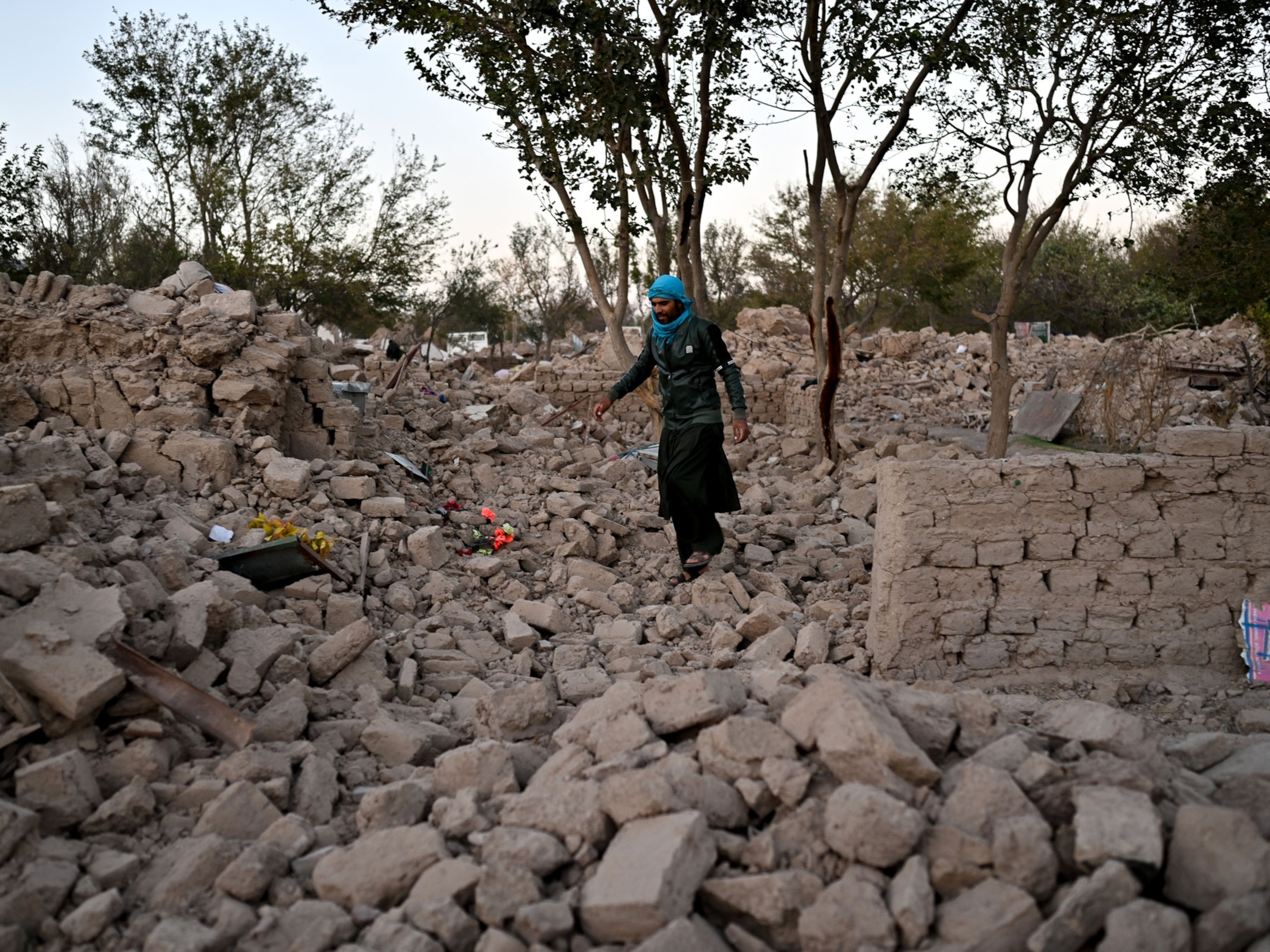


Avalanches, explained
Avalanches are masses of snow, ice, and rocks that fall rapidly down a mountainside. They can be deadly.
Falling masses of snow and ice, avalanches pose a threat to anyone on snowy mountainsides. Beautiful to witness from afar, they can be deadly because of their intensity and seeming unpredictability.
Humans trigger 90 percent of avalanche disasters, with as many as 40 deaths in North America each year. Most are climbers, skiers, and snowmobilers. Learning about avalanches, and the conditions that cause them, can help people recreate more safely in the backcountry.
Types of avalanches
The recipe for an avalanche may seem simple: a mountain slope and a thick layer of snow. But Simon Trautman, an avalanche specialist at the U.S. Forest Service’s National Avalanche Center and Northwest Avalanche Center in Washington, says it’s actually a trifecta that causes avalanches: terrain, snowpack, and weather conditions. Avalanches do occur naturally, but when you add humans into the mix, they can be deadly, says Trautman.
Avalanches come in many shapes and sizes. Many are small slides of powdery snow that move as a formless mass downslope. Outdoor recreationists often trigger these small “sluffs,” as well as more medium-sized avalanches.
Disastrous avalanches occur when massive slabs of snow break loose from a mountainside. The mass of snow shatters like broken glass as it races downhill. These hazards can travel as fast as cars on a freeway, up to 100 miles per hour, says Trautman.
Snow slides can start on mountain slopes with at least a 30-degree incline, but they occur most frequently on slopes of 35-50 degrees. Although avalanches need a slope to start, large avalanches accelerate downhill with sufficient momentum to cross flat terrain for short distances.
In some cases, a large chunk of ice or small glacier breaks off a mountainside, gathering snow and momentum and rushing down in a dangerous steamroll. One of the most deadly avalanches on Mount Everest, which killed 16 Sherpas, occurred when an ice mass the weight of 657 buses plummeted down on top of hikers.
Features of avalanches
Avalanches contain three main features: the starting zone, the avalanche track, and the runout zone. Avalanches launch from the starting zone. That’s often the most unstable part of the stope, and generally higher on the mountain.
Once the avalanche starts to slide, it continues down the avalanche track, the natural path it follows downhill. After avalanches, large clearings or missing chutes of trees provide clues to an avalanche’s trajectory.
The avalanche finally comes to a stop at the bottom of a slope, in the runout zone, where the snow and debris pile up.
What conditions cause an avalanche?
Avalanches are most common during the winter, December to April in the Northern Hemisphere, but they do occur year-round.
To get an avalanche, you need a surface bed of snow, a weaker layer that can collapse, and an overlaying snow slab. The highest risk period is during and immediately after a snow storm. Underlying snowpack, overloaded by a quick deluge of snow, can cause a weak layer beneath the slab to fracture naturally.
Human-triggered avalanches start when somebody walks or rides over a slab with an underlying weak layer. The weak layer collapses, causing the overlaying mass of snow to fracture and start to slide. Earthquakes can also trigger strong avalanches.
By digging a snow pit or profile, scientists can look at the composition of different snow layers that formed during a season, sort of like looking at the layers of a cake. The size and shape of the snowflakes in each layer provide clues about the weather events that occurred: big dumps of snow, drought, rain, a hard freeze, or loose, powdery snow. Larger, looser snow crystals are weaker, because there are fewer points they can touch to interact with the other snow layers. The interaction of the snow layers can help predict the chances of an avalanche.
“Snow is an incredibly dynamic and complicated medium, which means avalanches are the same,” says Trautman. He emphasizes that conditions can change rapidly with the weather, and this can be deadly.
Slopes shaded from direct sun stay cooler, preventing bonding between snow layers and leading to more avalanches in cold conditions. Conversely, during the spring, sunny mountainsides have a higher risk for avalanches because of rapid warming and melting. The number of “wet snow” slides could increase in the future with climate change, experts warn.
Precipitation type and intensity, temperature, wind, slope steepness and orientation (the direction it faces), terrain, vegetation, and general snowpack conditions can influence whether and how snow moves down a slope. Moving across the terrain, slight changes in slope or how the mountainside is oriented towards the sun can create drastically different conditions.
Take avalanche danger seriously
The Forest Service runs 14 backcountry avalanche centers in the United States to provide information for people recreating in snowy wilderness areas. Forecasters use four main elements to describe conditions, assign a danger level, and help recreators make the best decisions in the backcountry.
Field teams at avalanche centers document the snowpack—the thickness and type of snow layers—and combine those data with weather conditions to estimate danger levels. The forecasts take into account the potential type and size of an avalanche, the likelihood it will occur, and the location.
In some instances, forest rangers can blast cannons and other military artillery at unstable snowpack to trigger avalanches in a safe and controlled manner—when people aren’t present.
Before entering the backcountry, check online forecasts for the danger level in that area. Each mountain range has unique snow properties and therefore, avalanche risks, so checking your specific region is critical. New Zealand, Canada, and Europe also maintain year-round forecasts of avalanche danger for specific peaks and wilderness areas.
Experts recommend hiking and travelling earlier in the day. Weather conditions can change rapidly, and warming during the day creates more unstable snowpack with a higher risk for avalanches.
Education and proper training on avalanches can help prepare you. Heed all warnings and signs. Some accidents have been traced to people avoiding warnings due to psychological traps, like desiring the ultimate ski slope, untouched by humans.
Constant vigilance when you are outside can help avoid causing or getting swept up in avalanches, but even trained experts can be become victims. Be aware of the weather and terrain, and know your comfort level before you embark on an adventure. (Read more about avalanche safety tips.)
If caught in an avalanche, try to get off the slab. In best case scenarios, this is difficult. Skiers and snowboarders can head at a 45-degree angle downhill to gather speed and veer left or right out of the slide path. Snowmobilers can punch the throttle to power out of harm's way.
No escape? Reach for a tree. No tree? Swim hard. The human body is denser than avalanche debris and will sink quickly. As the slide slows, clear air space to breathe. Then punch a hand skyward.
Once the avalanche stops, it settles like concrete, making body movement nearly impossible. Wait—and hope—for a rescue. (Read about rescue dogs, trained to locate and dig out avalanche victims.)
“Learning about avalanches really helps people decide when and where, and how to recreate,” said Trautman. “We shouldn’t all be terrified of this stuff, but we should take it seriously. It’s supposed to be fun!”
You May Also Like
Go Further
Animals
- How can we protect grizzlies from their biggest threat—trains?How can we protect grizzlies from their biggest threat—trains?
- This ‘saber-toothed’ salmon wasn’t quite what we thoughtThis ‘saber-toothed’ salmon wasn’t quite what we thought
- Why this rhino-zebra friendship makes perfect senseWhy this rhino-zebra friendship makes perfect sense
- When did bioluminescence evolve? It’s older than we thought.When did bioluminescence evolve? It’s older than we thought.
- Soy, skim … spider. Are any of these technically milk?Soy, skim … spider. Are any of these technically milk?
Environment
- Are the Great Lakes the key to solving America’s emissions conundrum?Are the Great Lakes the key to solving America’s emissions conundrum?
- The world’s historic sites face climate change. Can Petra lead the way?The world’s historic sites face climate change. Can Petra lead the way?
- This pristine piece of the Amazon shows nature’s resilienceThis pristine piece of the Amazon shows nature’s resilience
- Listen to 30 years of climate change transformed into haunting musicListen to 30 years of climate change transformed into haunting music
History & Culture
- Meet the original members of the tortured poets departmentMeet the original members of the tortured poets department
- Séances at the White House? Why these first ladies turned to the occultSéances at the White House? Why these first ladies turned to the occult
- Gambling is everywhere now. When is that a problem?Gambling is everywhere now. When is that a problem?
- Beauty is pain—at least it was in 17th-century SpainBeauty is pain—at least it was in 17th-century Spain
Science
- Here's how astronomers found one of the rarest phenomenons in spaceHere's how astronomers found one of the rarest phenomenons in space
- Not an extrovert or introvert? There’s a word for that.Not an extrovert or introvert? There’s a word for that.
- NASA has a plan to clean up space junk—but is going green enough?NASA has a plan to clean up space junk—but is going green enough?
- Soy, skim … spider. Are any of these technically milk?Soy, skim … spider. Are any of these technically milk?
Travel
- Dina Macki on Omani cuisine and Zanzibari flavoursDina Macki on Omani cuisine and Zanzibari flavours
- How to see Mexico's Baja California beyond the beachesHow to see Mexico's Baja California beyond the beaches
- Could Mexico's Chepe Express be the ultimate slow rail adventure?Could Mexico's Chepe Express be the ultimate slow rail adventure?







